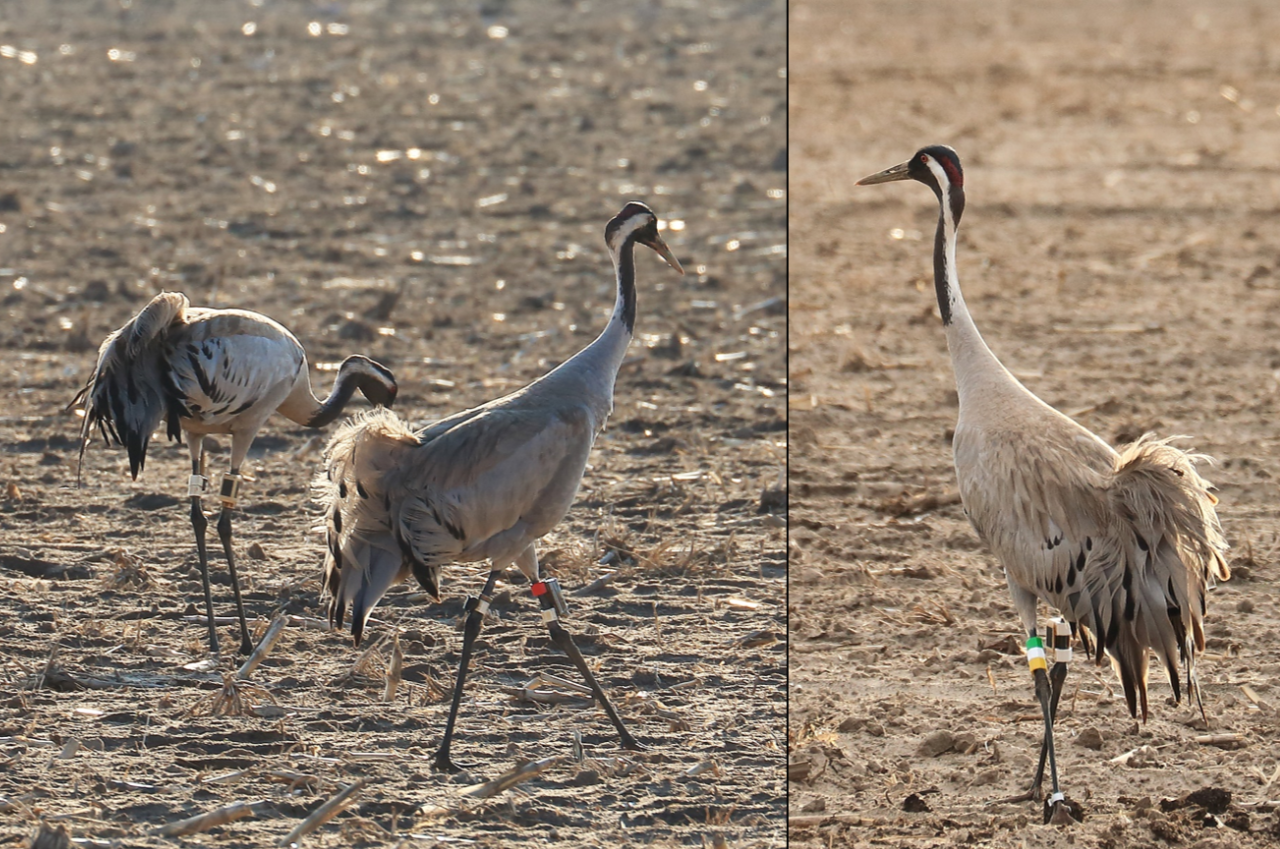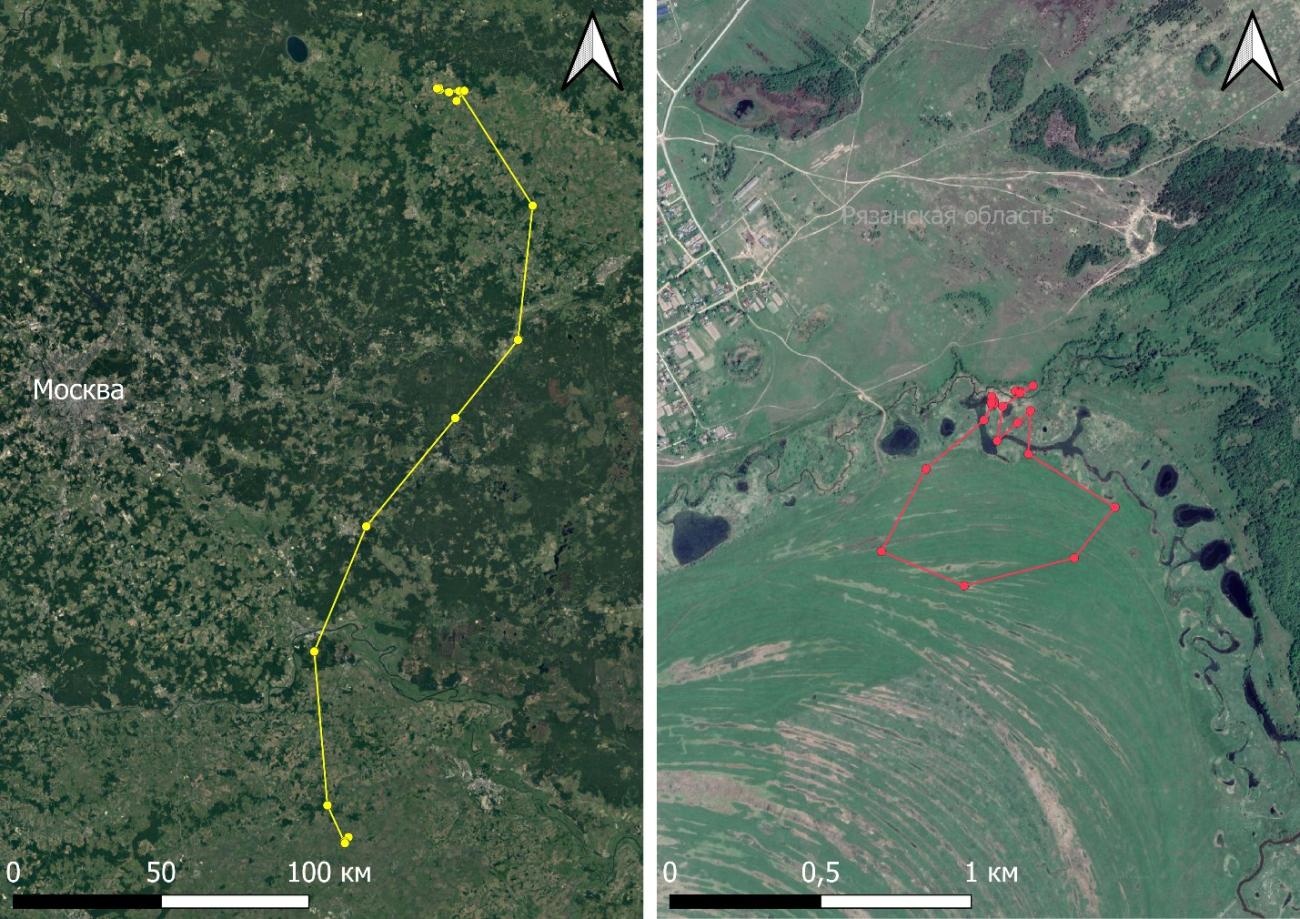
Studying the influence of weather conditions on animal behavior is important in a rapidly changing climate, allowing us to predict potential changes in behavior and adjust species conservation strategies. One aspect of behavior is daily activity, which is determined by internal (gender, age, life cycle) and external (length of day, weather conditions) factors.
Gray cranes are long-distance migrants that reach sexual maturity in the third or fourth year of life. During the breeding season they are territorial; in the pre-migration period they form flocks consisting of non-breeding individuals and families with chicks. Daily movements during the pre-migration period mainly include flights between feeding and overnight sites.
The daily movements of 24 gray cranes, tagged with GPS-GSM transmitters in the vicinity of the Oksky Nature Reserve, Ryazan region, were calculated. The connections between weather conditions (average daily temperature, total daily precipitation, wind speed), age, presence of chicks and their daily movements are considered. The study was conducted at the sites of autumn aggregations in the European part of Russia.
Average daily movements did not differ statistically among individuals of different ages and amounted to 17.4 km for adults with chicks, 18.9 km for adults without chicks, and 19.3 km for immatures. On hot or rainy days, cranes moved less, and on days with strong winds, movements increased.
The negative relationship between movement patterns and average daily temperature suggests possible consequences for the ability of cranes to accumulate enough energy to migrate successfully. Such changes may lead to increased mortality during migration or a longer pre-migration period, highlighting the need to monitor and effectively manage crane aggregations.
A graduate student at the Laboratory of Biodiversity Conservation and Use of Bioresources at the Institute of Ecology and Evolution of the Russian Academy of Sciences, Kristina Kondrakova, took part in the work. The study was published in the Journal of Ornithology.

